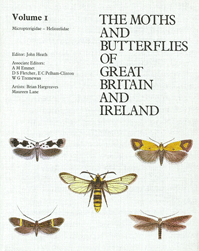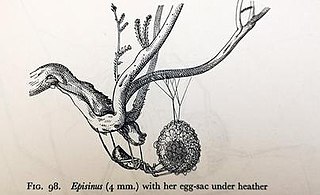
George Vernon Hudson FRSNZ was a British-born New Zealand entomologist and astronomer. Hudson is credited with proposing the modern daylight saving time. He was awarded the Hector Memorial Medal in 1923.

Nymphalis antiopa, known as the mourning cloak in North America and the Camberwell beauty in Britain, is a large butterfly native to Eurasia and North America.

Royal Worcester was established in 1751 and is believed to be the oldest or second oldest remaining English porcelain brand still in existence today. Part of the Portmeirion Group since 2009, Royal Worcester remains in the luxury tableware and giftware market, although production in Worcester itself has ended.

Dulcie Winifred Catherine Denison,, known professionally as Dulcie Gray, was a British singer and actress of stage, screen and television, a mystery writer and lepidopterist.

The copper underwing, humped green fruitworm or pyramidal green fruitworm is a moth of the family Noctuidae. The species was first described by Carl Linnaeus in his 1758 10th edition of Systema Naturae.

The Moths and Butterflies of Great Britain and Ireland is a multi-volume reference work on the Lepidoptera of the British Isles.
Richard Lewington is a British wildlife artist renowned for his exquisite eye for detail, especially with lepidoptera.

The mullein moth is a noctuid moth with a Palearctic distribution. The species was first described by Carl Linnaeus in his landmark 1758 10th edition of Systema Naturae.

British Tortricoid Moths is a two-volume publication by John David Bradley, W. G. Tremewan and Arthur Smith, published by the Ray Society. It is the standard work on the tortricoid moths of Britain.

Furcula furcula, the sallow kitten, is a moth from the family Notodontidae. It was first described by the Swedish entomologist Carl Alexander Clerck in 1759 from a specimen found in Sweden.
Robert Herbert Carcasson was an English entomologist who specialised in butterflies, but also authored two field guides to tropical fishes. He joined the Coryndon Museum, Nairobi, as senior entomologist in 1956. He then became its director, under the museum's new name of the Natural History Museum from 1961 to 1968. During this time he was awarded a PhD for his studies on African hawkmoths. From 1969 to 1971 he was Chief Curator of the Centennial Museum, Vancouver, Canada. In 1972 he travelled in Polynesia, Melanesia, Australia, Malaysia, Sri Lanka, Seychelles and East Africa for production of two field guides to coral reef fish of the Indo-Pacific region. From 1973 to 1979 he was Curator of Entomology at the Museum of British Columbia. He died of cancer. Somewhat a polymath, he was fluent in a number of languages, and produced the illustrations to a number of his works, culminating in hundreds of colour and line drawings of fishes for his reef fish field guides.

Mary Emily Eaton was an English botanical artist best known for illustrating Britton & Rose's The Cactaceae, published between 1919 and 1923.
Professor Stefan T. Buczacki is a British horticulturist, botanist, biographer and broadcaster.

Sparganothis pilleriana, also known as the vine leafroller tortrix, is a moth of the family Tortricidae found in the Palearctic realm. It was first described by the Austrian lepidopterists Michael Denis and Ignaz Schiffermüller in 1775.

Arthur Smith ARCA (1916–1991) was a British natural history illustrator who specialised in entomology. He was born in the village of Eastburn, between Skipton and Keighley in Yorkshire, UK.

Philedone is a genus of moths belonging to the subfamily Tortricinae of the family Tortricidae. It contains only one species, Philedone gerningana, the cinquefoil tortrix or cinquefoil twist, which is found in Asia and Europe. It was first described by the Austrian lepidopterists Michael Denis and Ignaz Schiffermüller in 1775.

Lobesia littoralis is a moth of the family Tortricidae. It is distributed wherever the foodplant occurs around the coasts of Europe, including the Faroes, Iceland and St Kilda.

Olindia schumacherana, also known as the white-barred tortrix, is a moth of the family Tortricidae found in most of Europe. The moth was first described by the Danish zoologist, Johan Christian Fabricius in 1787.

Isotrias rectifasciana, the hedge shade, is a species of moth of the family Tortricidae found in Asia and Europe. The moth was first described by the English entomologist, Adrian Hardy Haworth in 1811.
The Reverend Arthur Miles-Moss (1873-1948) was vicar of the largest Anglican parish in the world in Pará, Brazil, and also a noted amateur lepidopterist, artist and musician. His collection of watercolour drawings of Lepidoptera larvae are held at the Natural History Museum, London who bought them from his patron Lionel Walter, Baron Rothschild.
















